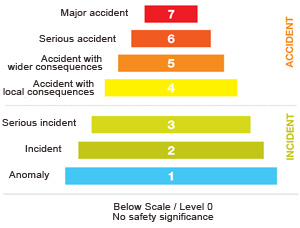Japan is planning to raise the nuclear alert level at the Fukushima Daiichi power plant to a maximum seven (“Major Event”) on the International Nuclear and Radiological Event Scale (INES), putting this emergency on a par with the 1986 Chernobyl disaster.
Previously, Japanese nuclear safety officials had insisted they had no plans to raise the severity of the crisis from five (“Accident with Wider Consequences”) the same level as the 1979 Three Mile Island accident.
But the government has recently come under pressure to raise the level at the plant after the Japanese Nuclear Safety Commission estimated the amount of radioactive material released from its stricken reactors reached 10,000 terabecquerels per hour for several hours following the earthquake and tsunami that devastated the country’s northeast coast on March 11. This level of radiation constitutes a “Major Accident” on the INES scale. The INES scale, devised by the International Atomic Energy Agency (IAEA), ranks nuclear and radiological accidents and incidents by their severity from one to seven. The INES scale is as follows:

The Japanese government said it would be widening the evacuation zone around the Fukushima plant due to high levels of accumulated radiation and fears about long-term effects on residents’ health.







